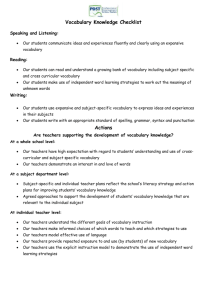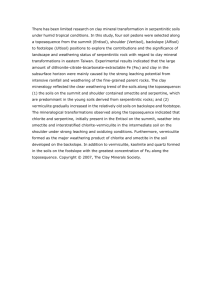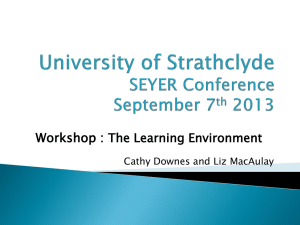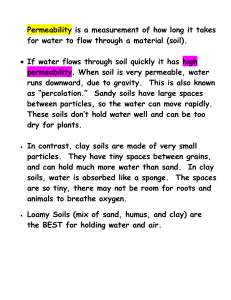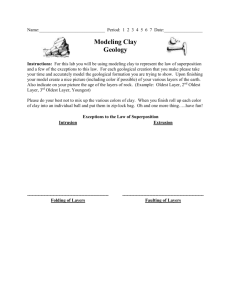molecula
advertisement
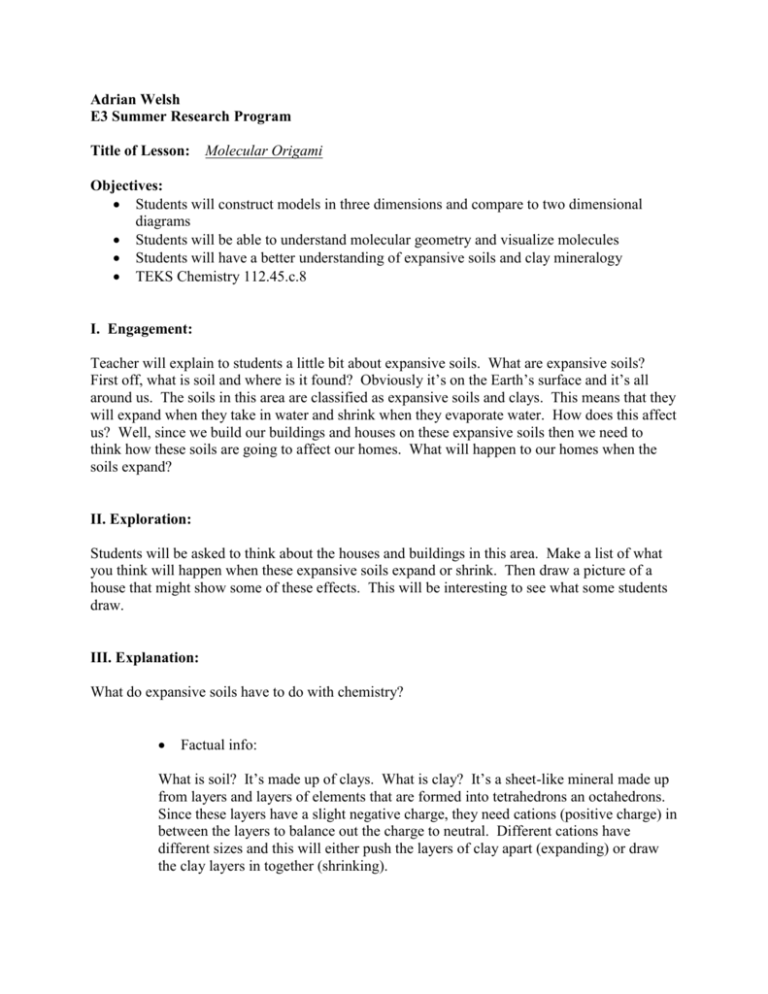
Adrian Welsh E3 Summer Research Program Title of Lesson: Molecular Origami Objectives: Students will construct models in three dimensions and compare to two dimensional diagrams Students will be able to understand molecular geometry and visualize molecules Students will have a better understanding of expansive soils and clay mineralogy TEKS Chemistry 112.45.c.8 I. Engagement: Teacher will explain to students a little bit about expansive soils. What are expansive soils? First off, what is soil and where is it found? Obviously it’s on the Earth’s surface and it’s all around us. The soils in this area are classified as expansive soils and clays. This means that they will expand when they take in water and shrink when they evaporate water. How does this affect us? Well, since we build our buildings and houses on these expansive soils then we need to think how these soils are going to affect our homes. What will happen to our homes when the soils expand? II. Exploration: Students will be asked to think about the houses and buildings in this area. Make a list of what you think will happen when these expansive soils expand or shrink. Then draw a picture of a house that might show some of these effects. This will be interesting to see what some students draw. III. Explanation: What do expansive soils have to do with chemistry? Factual info: What is soil? It’s made up of clays. What is clay? It’s a sheet-like mineral made up from layers and layers of elements that are formed into tetrahedrons an octahedrons. Since these layers have a slight negative charge, they need cations (positive charge) in between the layers to balance out the charge to neutral. Different cations have different sizes and this will either push the layers of clay apart (expanding) or draw the clay layers in together (shrinking). Demonstrations: Smectite d = 1. 8n m Gl y Glycol solvation d = 1. 4n m M g M g Mg saturation d = 1. 21n m K K K saturation This is showing the clay mineral smectite. It’s one of the most expansive clay minerals. As you can see, when there are different ions in between the two layers, the layers are at different lengths from each other. New Vocabulary Mineral: Naturally occurring Inorganic homogenous solid Crystalline structure Definite chemical composition Clay: sheet-like mineral with cations in between Soil: the dirt below our homes (real general) Expansive soil: soil that expands or contracts Tetrahedron: 4 sided molecule (looks like a pyramid) Octahedron: 8 sided molecule (like 2 pyramids connected at the base) Miscellaneous Here are pictures of driveways and walls that have been cracked due to expansive soils. IV. Elaboration: Time to learn molecular geometry! We look on paper and on books to see these “three dimensional” shapes of molecules (in the form of tetrahedrons and octahedrons) and just say “ok.” To really visualize this, models need to be made of these molecules. This is where we use molecular origami! Origami is the Japanese art of folding paper into shapes representing objects. Real common origami that you see is paper being made into animals like swans or other fowl. Here we will use the ancient art of origami to make molecules. We will use the mineral quartz (SiO4) to start off with. As a class we’ll fold it together and explain how to fold or cut along certain lines. V. Evaluate: Group work: Assign groups of 3 or 4 to start making a lot of these molecules out of origami. Once there is enough for a good size chain then stop. Put them all together to make the chain and then do it again to mirror the first chain. Here is where we’ll use different size balls (preferably Styrofoam balls) in between the two layers to show how the clays will expand or contract.
